Polish jet fighters of the first generation
In the first post-war years, the air defense units of the Polish Army were equipped with Soviet-made equipment and weapons, and copied the structure of the Soviet army. In 1949, a seven-year plan for the reform of the armed forces was adopted. In the same year, Marshal Konstantin Rokossovsky became Minister of National Defense.
After 1953, the number of servicemen in the Polish Army gradually decreased. By 1958, the size of the army was approximately 300, after which it remained at about the same level until 000. In 1990, most of the officers of the Soviet army left Poland along with Marshal Rokossovsky.
Until the second half of the 1950s, air defense units and fighter aviation equipped exclusively with Soviet-made equipment and weapons. After overcoming the devastating consequences of the Second World War and the restoration of Polish industry, the production of its own models intended for equipping the air defense forces was launched, and licensed production of MiG-15 and MiG-17 jet fighters was carried out.
The first Polish jet fighters
The Polish Air Force was formalized as a branch of service in 1947, and at the first stage, three fighter regiments were armed with Yak-9T and Yak-9P piston aircraft.
In 1950, rearmament to jet fighters began. The first jet aircraft of the Polish Air Force was the Yak-17. This single-seat fighter, like the "spark" UTI Yak-17, was used as a training aircraft during the transition to more advanced machines.
The jet Yak-17 had a maximum takeoff weight of 3 kg. The RD-240A turbojet engine with a thrust of 10 kgf provided a maximum flight speed of 910 km / h - that is, at the level of the best piston fighters. Flight range with PTB - 748 km. Armament - two 717-mm guns NS-23.
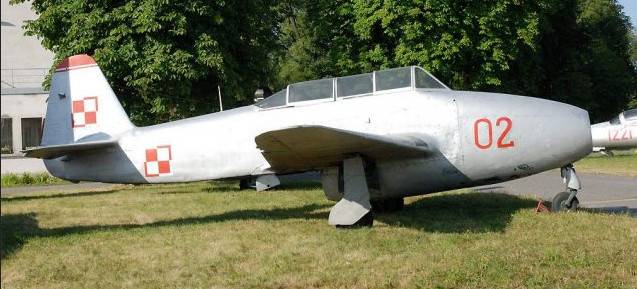
Combat Yak-17s quickly became obsolete, were withdrawn from combat duty in the second half of 1951 and were used for training purposes until the end of 1953.
Two-seater UTI Yak-17 aircraft were operated by the Polish Air Force until 1955. In 1957, two UTI Yak-17s were transferred to the Aviation Institute, where the TS-11 Iskra was created. One "spark" was used as a source of spare parts, and the other, after a major overhaul, received civil registration and flew until 1960.
In 1951, the Yak-23 fighter entered service with the Polish Air Force. This aircraft, like the Yak-17, had a "raid" scheme, but was designed from scratch. A total of 90 Yak-23s were delivered from the USSR. Initially, the Polish government planned to establish a licensed production of the Yak-23, but later it was abandoned in favor of the MiG-15.
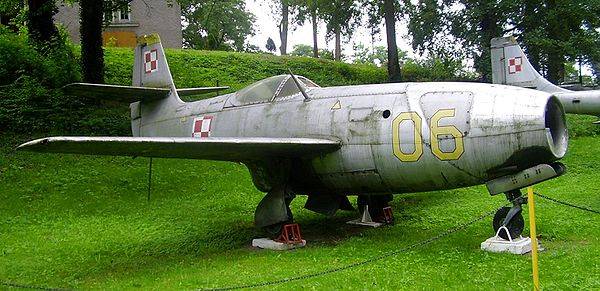
The fighter with a maximum takeoff weight of 3 kg was equipped with an RD-389 engine with a thrust of 500 kgf. The maximum flight speed at high altitude is 1 km / h. Flight range with PTB - 590 km. Armament - two 923-mm guns. Due to the leaky cockpit, the high-altitude characteristics of the Yak-1 were at the level of piston fighters of the Second World War. The active service of the Yak-030 in combat squadrons continued until 23, after which they began to be used for training purposes. The last Yak-23s in reserve were decommissioned in 23.
In 1956, the armed forces handed over two Yak-23 aircraft to the Aviation Institute. One was dismantled for parts, and the other was assigned civilian registration numbers, and this aircraft was used until November 1961 for flight tests and research.
Soviet-made MiG-15 and MiG-17 fighters, as well as Polish modifications created on their basis
The MiG-15 was one of the best first generation jet fighters. This aircraft deservedly enjoyed popularity in the air forces of many countries and took part in a number of armed conflicts. It is quite natural that the jet fighter, outstanding in terms of its characteristics, attracted the attention of the command of the Polish Air Force.
The MiG-15 jet fighter, equipped with the RD-45F engine, which produced thrust of 2 kgf, had a maximum take-off weight of 270 kg. At high altitude, the aircraft could accelerate in level flight up to 5 km/h. Flight range - 260 km. The fighter had a pressurized cockpit, and its ceiling was about 1 m. The armament, designed to fight the American B-050 bombers, was very powerful: one 1-mm and two 420-mm guns.
Polish pilots began retraining from the Yak-23 to the MiG-15 in mid-1951. Initially, Poland received aircraft manufactured at Soviet and Czechoslovak factories. However, already on July 17, 1952, the first MiG-15, built at the PZL aircraft factory in the city of Mielec, took off. The first post-war Polish fighter of its own production received the designation Lim-1.
Mastering the serial production of the MiG-15 and engines for it greatly advanced the Polish aviation industry. Until the second half of 1954, 227 Lim-1 jet fighters were produced.
In 1953, Poland received MiG-15bis fighters, an improved version of the MiG-15. This fighter was equipped with a VK-1 engine with a thrust of 2 kgf. The maximum takeoff weight reached 700 kg. The maximum speed is 6 km / h. Flight range - 045 km.
Deliveries of Polish-made MiG-15bis under the designation Lim-2 began at the end of 1954. Until November 1956, 500 aircraft were built.
The operation of the MiG-15, MiG-15bis of Soviet and Czechoslovak production was carried out in parallel with the Lim-1 and Lim-2 aircraft. Some of these machines have served for over 20 years. Initially, they ensured the inviolability of Poland's air borders, but due to the increase in the flight speed of combat aircraft of NATO countries, obsolete, but still strong fighters were converted into fighter-bombers and reconnaissance aircraft, and used for training and training purposes.
In parallel with the MiG-15, two-seat training aircraft UTI MiG-15 arrived in Poland. After the serial construction of Lim-1 and Lim-2 was completed, the SBLim-1 and SBLim-2 "sparks" were produced. The aircraft were not re-manufactured, but were converted at the aircraft repair plant in Bydgoszcz from single-seat fighters. The first SBLim-1 was manufactured in 1957, and the head SBLim-2 was released in 1960. In total, 200 aircraft were reworked.
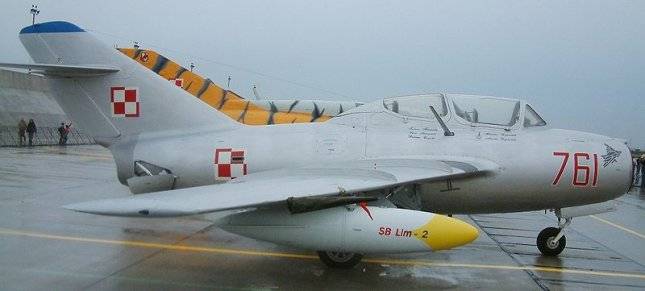
According to their characteristics, the Polish TCBs were close to the UTI MiG-15 and were armed with one 23-mm cannon.
In addition to SBLim-1 and SBLim-2, from 1961 to 1969, the two-seat SBLim-1Art and SBLim-2Art were produced. On these aircraft, designed to correct artillery fire and conduct reconnaissance in the front line, there were no control devices in the second cockpit, but cameras and a table for working with a map appeared instead.
According to Polish data, at least 30 such aircraft were delivered. Subsequently, some of them, after a major overhaul, were converted back into training SBLim-2M and aircraft designed to probe the atmosphere to detect nuclear explosion products.
The SBLim-1 was decommissioned in 1975, and the SBLim-2 remained in service until mid-1993. After the liquidation of the Warsaw Pact, about a dozen Lim-2 and SBLim-2 were sold to the West. Some aircraft were brought to the flying state, they still take to the air and participate in various air shows.
In 1956, the plant in Mielec received four sets of Soviet-made parts intended for training plant personnel in assembling MiG-17F fighters. At the same time, the production of VK-1F engines was established at the WSK Rzeszow enterprise. The first aircraft assembled from Soviet parts was handed over to the Polish Air Force on January 18, 1957. In mid-February 1957, the production of Lim-5 fighters, a licensed copy of the MiG-17F, began.
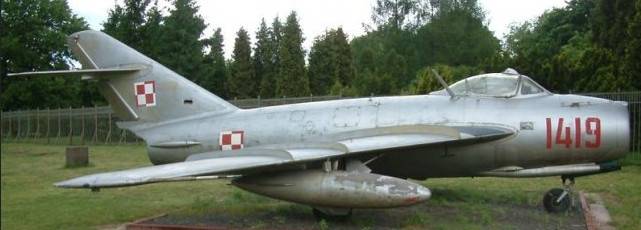
On February 13, 1957, the Polish military aviation received 3 Lim-5 aircraft. In total, 1957 Lim-222 aircraft were built in 5. Since 1960, the production of fighters at the plant in Mielec was carried out on two assembly lines. At the same time, Polish engineers made various changes and improvements to the design of the fighter developed in the USSR. The production of Lim-5 aircraft continued until June 30, 1960. A total of 477 aircraft were built in 19 serial series. This number also includes MiG-17PF interceptors, produced under the designation Lim-5R, and Lim-5R reconnaissance aircraft equipped with an AFA-39 camera.
The characteristics of the fighters being built in Poland did not differ much from the MiG-17F. The Lim-5 aircraft had a maximum takeoff weight of 6 kg. Maximum flight speed - 075 km / h, afterburner - 1 km / h. Flight altitude - 047 m. Flight range with additional fuel tanks - 1 km. Built-in armament: one 154 mm and two 16 mm guns.
The Lim-5Р interceptor, equipped with the RP-5 Emerald radar sight, had a maximum take-off weight of 6 kg. The presence of a radar sight on board made it possible to intercept in the absence of visual contact with the target. The transmitter antenna was located above the upper lip of the air intake, and the receiving antenna was located in the center of the air intake. On the afterburner, Lim-350P could accelerate to 5 km / h. Ceiling - 1 m. Range with additional fuel tanks - 123 km. Armament - two 15-mm guns.
A total of 1960 Lim-129Ps were produced by the end of 5. Subsequently, some Lim-5Rs were equipped with K-13 (R-3C) guided missile holders, which increased the combat capabilities of the interceptors and allowed them to remain in service until the early 1970s.
In the late 1950s, on the basis of the Lim-5 fighter, an aircraft was created in the factory design bureau in Mielec, designed to directly support the ground forces. It is noteworthy that the representatives of the OKB im. A. I. Mikoyan was rejected by the Polish project after meeting him. But, despite the negative feedback from the head designer, in 1960, mass production of the Lim-5M light strike aircraft began.
For basing on unpaved airfields, the Lim-5M received dual chassis wheels. The takeoff run distance was shortened through the use of solid-fuel boosters, and the flight range was increased by increasing the capacity of the fuel tanks in the thicker wing. The built-in cannon armament of the Lim-5M was the same as on the MiG-17F. Under the wing it was possible to hang two blocks for sixteen 57-mm NAR or 50-100 kg bombs.
However, due to the increased drag, the flight performance and controllability of the Lim-5M aircraft deteriorated, and therefore it was received coolly by the troops. As a result of flight accidents that occurred in 1961-1964, eight pilots were killed and 10 of the 60 aircraft that were available crashed. In 1964, it was decided to convert the failed Lim-5Ms into Lim-6bis fighter-bombers.
Based on the operating experience of the not very successful Lim-5M, the military came to the conclusion that it was necessary to create a Lim-5 fighter-bomber based on the Lim-6. Serial production of this aircraft began in 1963. An improved version adapted for operations at low altitudes was designated Lim-6bis.
Starting in 1971, part of the Lim-5R interceptors, which retained a sufficient flight resource, were converted into Lim-6M fighter-bombers.
Fighters and fighter-bombers, created in Poland on the basis of the Soviet MiG-17F, formed the basis of the Polish air force fleet for a long period of time, and 17 fighter regiments were armed with them. The last such aircraft were decommissioned in 1992. Polish-built fighters were also in service in the GDR, Bulgaria, Egypt, Indonesia and Guinea-Bissau.
The first supersonic fighters of the Polish Air Force
In the late 1950s, it became clear that the existing Polish Lim-5 jet fighters were not able to effectively intercept supersonic aircraft during the day, and the Lim-5P interceptors, due to the limited capabilities of the airborne radar sight, had very modest opportunities to independently search for air targets at night.
In this regard, the Polish government in 1957 decided to purchase the MiG-19P and MiG-19PM supersonic interceptors in the USSR, equipped with the RP-5 radar sight. The development of these supersonic aircraft dramatically increased Poland's air defense capabilities to intercept air targets.
The MiG-19P was armed with two 30mm cannons and could carry two ORO-57K launchers with 8 S-5 unguided rockets.
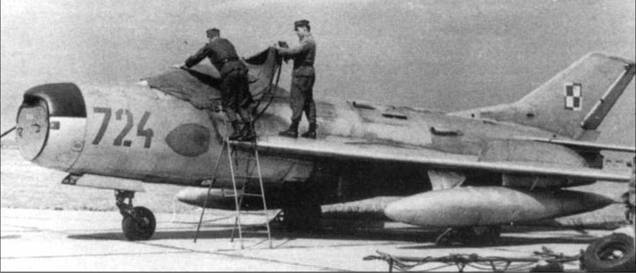
The MiG-19PM lost its cannons and was armed with four RS-2U (K-5M) guided missiles.
The MiG-19PM supersonic interceptor had good flight data for the late 1950s, but was more demanding than the MiG-17F in terms of pilot training. The maximum takeoff weight of the MiG-19PM was 9 kg. Two RD-400B turbojet engines with a thrust of 9 kgf each (2 kgf afterburner) could accelerate an aircraft carrying four missiles to 600 km/h. Ceiling - 3 m, range - 300 km, flight range with additional fuel tanks - 1 km.
In connection with the expected arrival of MiG-21 fighters, Poland has acquired 24 MiG-19P and 12 MiG-19PM. These interceptors were divided among three fighter regiments, in which "pursuit squadrons" were formed.
In July 1959, Polish pilots on their MiG-19PM fired guided missiles at unmanned targets La-17 at the Soviet Krasnovodsk training ground in Turkmenistan. A year later, similar firing took place at the Ashluk training ground in the Astrakhan region.
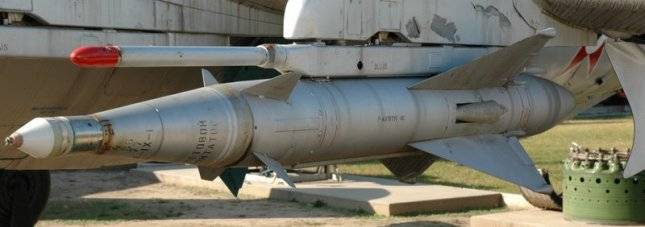
The RS-2U missile, guided in the beam of an airborne radar, was developed in the mid-1950s, and the MiG-17PFU interceptor became its first carrier. Subsequently, it was used as part of the armament of the MiG-19PM and almost all modifications of the MiG-21. With a length of 2 mm, the rocket weighed 538 kg. The mass of the warhead is 83,2 kg. Firing range - up to 13 km.
Soon after the Polish pilots mastered the MiG-19P / PM, they began combat duty. A higher speed compared to the Lim-5Р and a longer flight duration made it possible to quickly reach the interception line and stay in the air longer.
In connection with the retraining for MiG-21 fighters, all Polish MiG-19P / PM in 1965 were transferred to the 28th Fighter Aviation Regiment. These aircraft were actively operated until the second half of 1974. After that, the engines removed from the decommissioned interceptors were sent to the USSR, where they were used for installation on La-17 radio-controlled targets, and the Polish MiG-19P / PM gliders were shot at firing ranges. Three aircraft have been preserved as museum exhibits and monuments.
To be continued ...
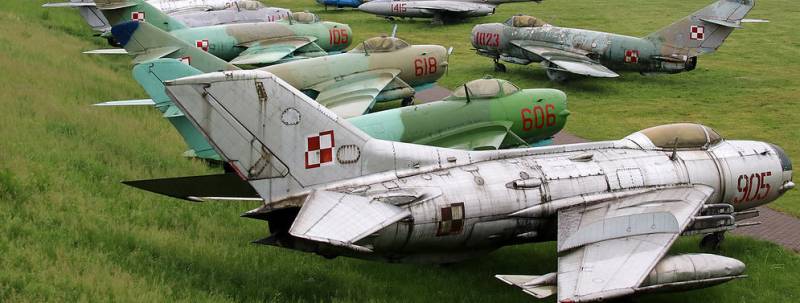
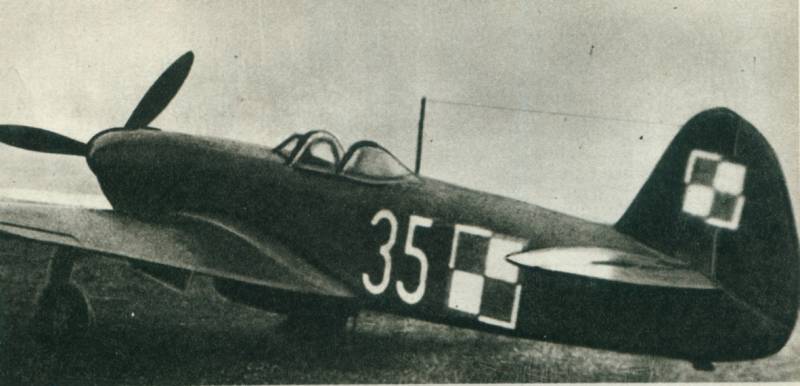
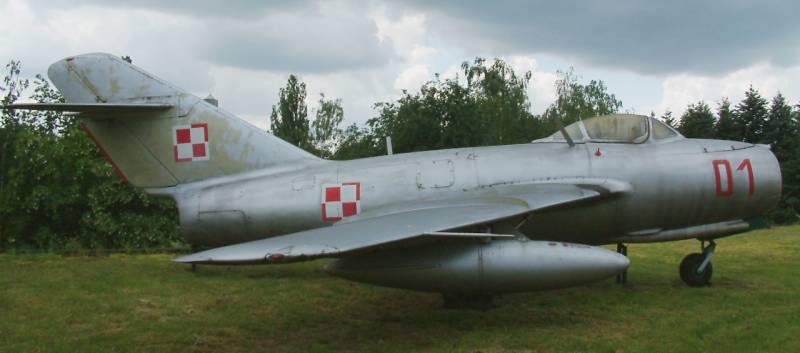
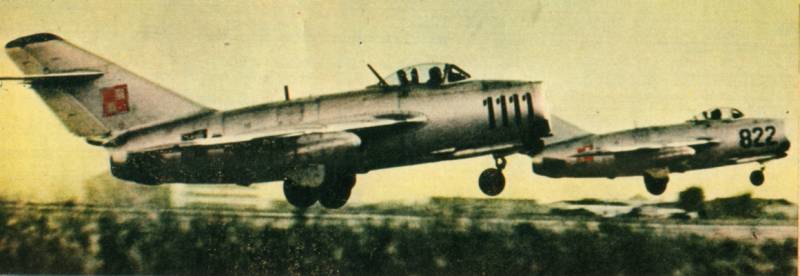
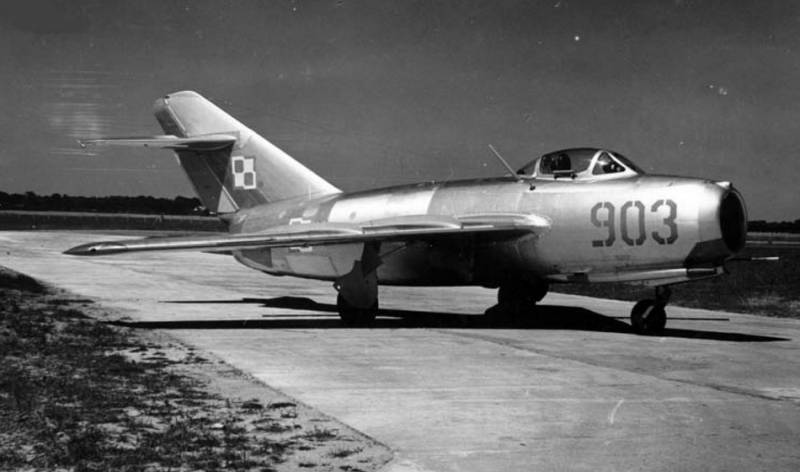
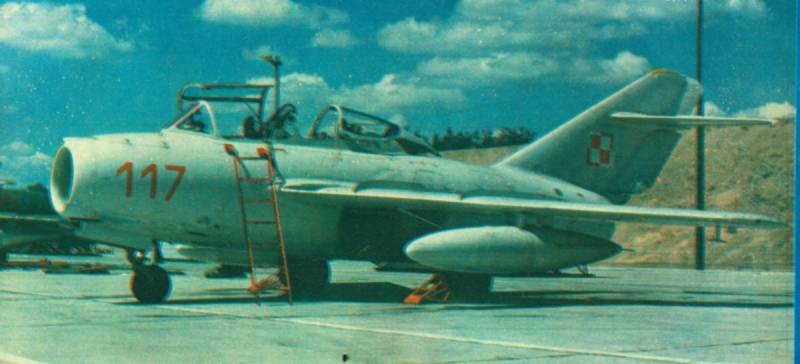
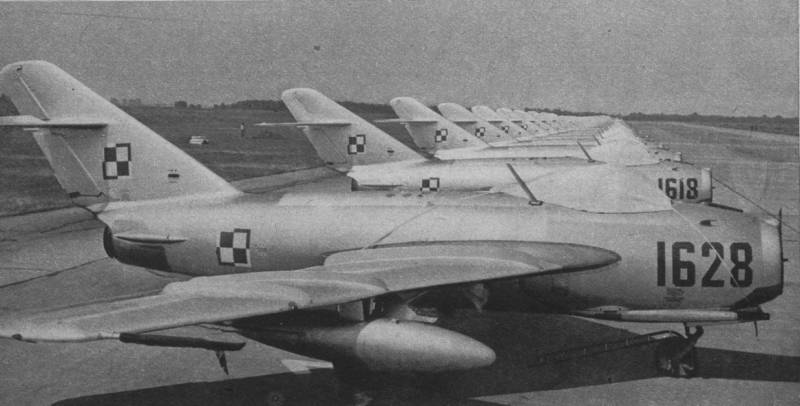
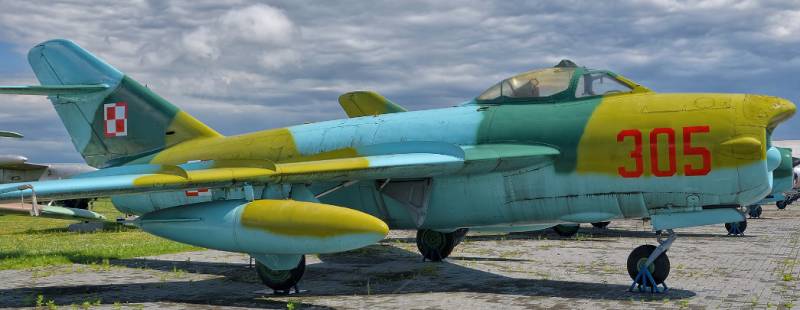
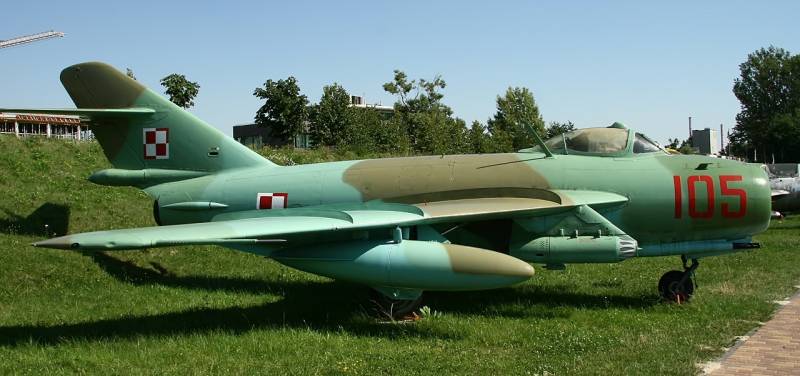
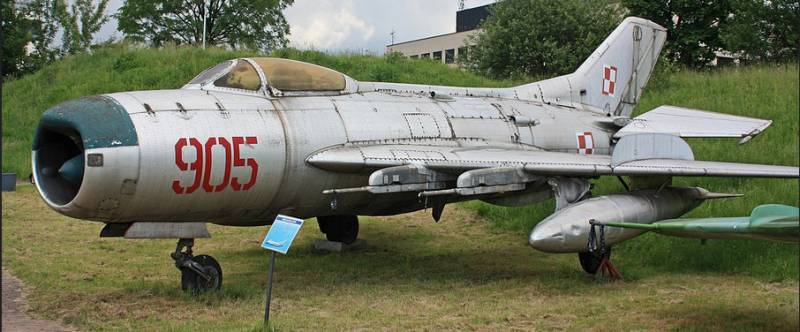
Information